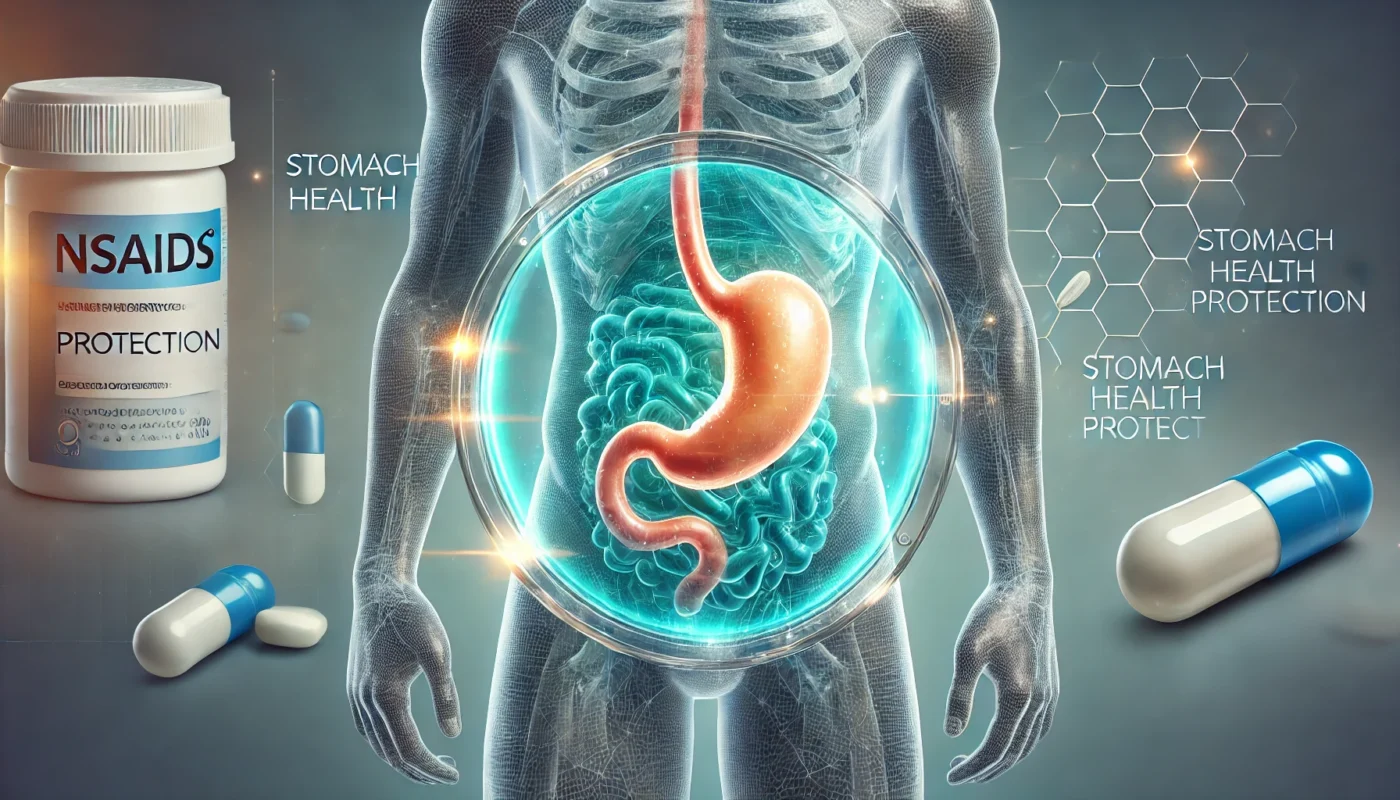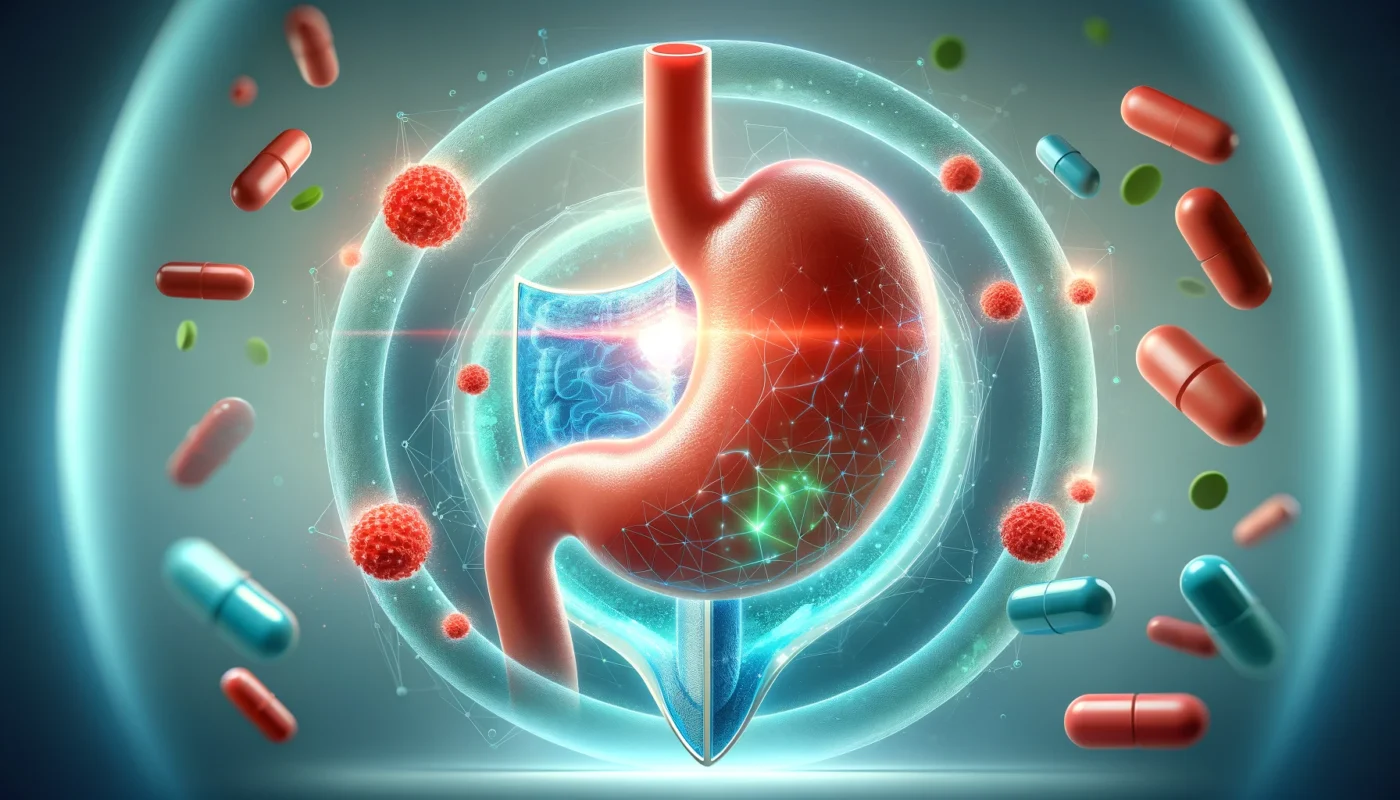NSAIDs are a class of medications that reduce pain, decrease fever, prevent blood clots, and, in higher doses, decrease inflammation. They’re widely used for conditions such as arthritis, headaches, and menstrual cramps. Popular NSAIDs include ibuprofen (Advil, Motrin), naproxen (Aleve), and aspirin.
You may also like: Understanding Long-Term Pain Relief Options
Mechanism of Action
NSAIDs work by inhibiting enzymes known as cyclooxygenases (COX-1 and COX-2). These enzymes are involved in the production of prostaglandins, which are compounds that promote inflammation, pain, and fever. By targeting these enzymes, NSAIDs effectively reduce inflammation and provide pain relief. However, this mechanism is not without its drawbacks, especially concerning stomach health.
How NSAIDs Affect Your Stomach
While COX-2 is primarily responsible for inflammation, COX-1 also plays a crucial role in protecting the stomach lining by promoting the production of mucus that shields the stomach wall. When NSAIDs inhibit COX-1, it can lead to reduced stomach protection, thereby increasing the risk of ulcers and gastrointestinal bleeding. The balance between alleviating pain and protecting the stomach is delicate and requires careful consideration.
Common NSAID-Induced Stomach Issues
The use of NSAIDs can lead to several gastrointestinal issues ranging from mild discomfort to severe complications. Some individuals may experience nausea, heartburn, or indigestion, which are relatively common. However, long-term or high-dose NSAID use can result in more serious conditions such as peptic ulcers and life-threatening gastrointestinal bleeding. Awareness of these potential risks is vital for anyone using NSAIDs regularly.
Stomach-Friendly Painkillers: Your Options
Choosing the right NSAID can significantly impact your stomach health. Let’s explore the options for those seeking stomach-friendly painkillers.
COX-2 Inhibitors: A Safer Alternative?
COX-2 inhibitors are a type of NSAID designed to selectively block the COX-2 enzyme, minimizing the impact on the stomach. Celecoxib (Celebrex) is a well-known COX-2 inhibitor that provides effective pain relief with a reduced risk of stomach issues. Despite their benefits, it’s essential to consult a healthcare professional before switching to or starting on COX-2 inhibitors, as they may not be suitable for everyone, especially those with cardiovascular concerns.
Enteric-Coated NSAIDs
Some NSAIDs come in enteric-coated formulations, which are designed to dissolve in the intestine rather than the stomach. This can reduce the risk of stomach irritation. Enteric-coated aspirin is an example, but remember, while this formulation may lessen stomach discomfort, it does not entirely eliminate the risk of ulcers. It’s crucial to adhere to dosing recommendations and remain vigilant for any signs of gastrointestinal distress.
Topical NSAIDs: Localized Relief with Fewer Systemic Effects
For those concerned about systemic side effects, topical NSAIDs can be a viable option. These are applied directly to the skin over the painful area, providing localized relief with minimal absorption into the bloodstream. This approach reduces the risk of stomach-related side effects. Diclofenac gel is a common topical NSAID used for arthritis-related pain. However, it’s important to use these products as directed to avoid potential skin irritation or other localized reactions.
Non-NSAID Alternatives
In some cases, non-NSAID alternatives can be considered for pain management, especially for individuals with a high risk of gastrointestinal complications. Acetaminophen (Tylenol) is often recommended as it doesn’t have the same gastrointestinal risks associated with NSAIDs. However, it’s crucial to be mindful of dosing to avoid liver damage. Consulting a healthcare provider can help determine the most appropriate pain management strategy tailored to individual needs.
Practical Strategies for Protecting Your Stomach
In addition to selecting the right type of NSAID, there are practical strategies you can implement to safeguard your stomach health.
Take NSAIDs with Food or Milk
Taking NSAIDs with food or milk can help protect the stomach lining by reducing direct irritation. It also slows down the absorption of the medication, which can further minimize stomach issues. This simple practice can make a significant difference, especially for those who require frequent NSAID use. Always follow the specific instructions provided with your medication for optimal results.

Use the Lowest Effective Dose
Always use the lowest effective dose of NSAIDs for the shortest possible duration. This minimizes exposure and reduces the risk of stomach-related complications. Regularly reassessing your pain management needs with a healthcare professional can ensure that you’re not using higher doses than necessary. This strategy not only protects the stomach but also mitigates other potential side effects associated with long-term NSAID use.
Consider Protective Medications
In some cases, healthcare providers may prescribe medications to protect the stomach lining, such as proton pump inhibitors (PPIs) or H2 blockers, when long-term NSAID use is necessary. These medications reduce stomach acid production, offering an additional layer of protection. It’s important to discuss the benefits and potential side effects of these protective medications with your healthcare provider to ensure a balanced approach to pain management.
Monitor for Symptoms
It’s crucial to be vigilant about any signs of stomach distress when using NSAIDs, such as abdominal pain, heartburn, or black stools, which may indicate bleeding. If you experience any of these symptoms, seek medical attention promptly. Early detection of gastrointestinal issues can prevent more severe complications. Regular check-ups and open communication with your healthcare provider can aid in early intervention and effective management.
Integrating Holistic Approaches
Beyond choosing stomach-friendly NSAIDs, integrating holistic approaches can enhance your overall pain management strategy.
Dietary Considerations
Anti-inflammatory foods, such as leafy greens, fatty fish, nuts, and seeds, can support pain management and reduce reliance on NSAIDs. Incorporating a balanced diet rich in these foods can help manage inflammation naturally. Additionally, avoiding alcohol and smoking can further protect your stomach lining, as these substances can exacerbate gastrointestinal issues and negate the protective effects of an anti-inflammatory diet.

Mind-Body Techniques
Practices such as yoga, meditation, and mindfulness can help manage pain by reducing stress and promoting relaxation. These techniques can be valuable adjuncts to your pain management regimen, offering a natural way to decrease pain perception and improve overall well-being. Regular practice can also enhance your ability to cope with chronic pain, potentially reducing the need for medication over time.
Physical Therapy and Exercise
Engaging in regular physical activity and working with a physical therapist can improve mobility and strength, reducing the need for NSAIDs. Tailored exercise programs can address specific pain issues and enhance recovery. Physical therapy can also provide education on body mechanics and ergonomics, helping prevent future injuries and pain episodes. A consistent exercise routine can contribute to long-term pain management and overall health improvement.
Alternative Therapies
Exploring alternative therapies such as acupuncture, chiropractic care, or massage therapy can offer additional pain relief options. These therapies can complement traditional pain management strategies, providing holistic support. It’s important to consult with qualified practitioners and discuss these options with your healthcare provider to ensure they’re appropriate for your specific condition and health status.
Conclusion: Making Informed Choices
Choosing the right NSAID and implementing practical strategies can significantly impact your stomach health. By being informed and proactive, you can manage pain effectively while minimizing the risk of gastrointestinal complications.
Remember, it’s always best to consult with healthcare professionals when considering changes to your medication regimen. Together, you can devise a plan that aligns with your health goals and ensures your wellbeing.
In conclusion, protecting your stomach while using NSAIDs is not only possible but essential for maintaining long-term health. By making informed choices and integrating holistic approaches, you can achieve effective pain management without compromising your stomach health.

By adopting a comprehensive approach that combines medication management with lifestyle modifications, you can safeguard your stomach while effectively addressing pain and inflammation. Your journey to pain relief doesn’t have to come at the expense of your gastrointestinal health.
Further Reading:
Non-steroidal anti-inflammatory drugs and the gastrointestinal tract
Guidelines to Help Reduce the Side Effects of NSAIDs (Nonsteroidal Anti-inflammatory Drugs)
The Difference in Over-the-Counter Pain Relievers
NSAIDs, stomach health, pain management, gastrointestinal issues, COX-2 inhibitors, enteric-coated NSAIDs, topical NSAIDs, non-NSAID alternatives, protective medications, dietary considerations, holistic approaches, physical therapy, alternative therapies, inflammation, healthcare professionals
Important Note: The information contained in this article is for general informational purposes only, and should not be construed as health or medical advice, nor is it intended to diagnose, prevent, treat, or cure any disease or health condition. Before embarking on any diet, fitness regimen, or program of nutritional supplementation, it is advisable to consult your healthcare professional in order to determine its safety and probable efficacy in terms of your individual state of health.
Regarding Nutritional Supplements Or Other Non-Prescription Health Products: If any nutritional supplements or other non-prescription health products are mentioned in the foregoing article, any claims or statements made about them have not been evaluated by the U.S. Food and Drug Administration, and such nutritional supplements or other health products are not intended to diagnose, treat, cure, or prevent any disease.

